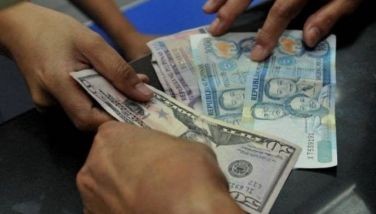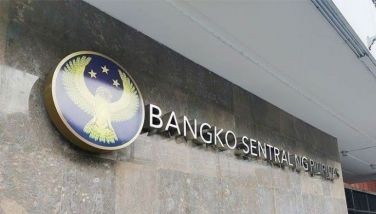Citibank enters remittance market in RP
June 24, 2005 | 12:00am
Recognizing the huge potential market of the business, global financial giant Citibank NA has entered the dollar remittance market in the Philippines.
"We already have 75 financial centers all over California and Nevada, which is home to roughly half of the 2.6 million Filipinos in the United States," said Nina Aguas, Citibank country manager for global consumer group.
According to the Citibank official, they have been interacting with Filipino-American communities in California since November last year in preparation for the new business venture.
Citibank will compete head-on with the three of the country’s biggest banks — Philippine National Bank, Metrobank and Bank of the Philippine Islands — for a piece of the huge remittance pie, estimated to reach as much $12 billion annually, inclusive of remittances through non-bank or informal channels.
Official estimates indicate that nearly 60 percent of the remittances comes from the US mainland.
However, to offset the market advantage of the local players, Citibank will issue a money card (also an automatic teller machine or ATM card) to the receiving party in the Philippines. This ATM card will be linked to the roughly 300 ATM machines of the BancNet and Megalink networks in the Philippines.
For the Filipino-American community in California and the rest of the US, Citibank will make available 800 of its branches to provide the service. Citibank has 400 branches in the area plus another 400 from the acquired California Federal financial institution.
Citibank claims to have one of the lowest fees in the remittance business for services that are real time, which is $8 per transaction and another one-time fee for the money card.
If the receiving end in the Philippine wants to receive the remittance in US dollars, they have first to open an account with Citibank NA or the City Savings Bank, Citibank’s soon-to-open thrift bank unit.
Otherwise, the money card would be sufficient to withdraw pesos from the ATM machines.
Aside from the bank channels, there are also foreign and domestic money transfer companies that also handle remittances of Filipinos based overseas, with some working in alliance with local banks while others operating independently.
"We already have 75 financial centers all over California and Nevada, which is home to roughly half of the 2.6 million Filipinos in the United States," said Nina Aguas, Citibank country manager for global consumer group.
According to the Citibank official, they have been interacting with Filipino-American communities in California since November last year in preparation for the new business venture.
Citibank will compete head-on with the three of the country’s biggest banks — Philippine National Bank, Metrobank and Bank of the Philippine Islands — for a piece of the huge remittance pie, estimated to reach as much $12 billion annually, inclusive of remittances through non-bank or informal channels.
Official estimates indicate that nearly 60 percent of the remittances comes from the US mainland.
However, to offset the market advantage of the local players, Citibank will issue a money card (also an automatic teller machine or ATM card) to the receiving party in the Philippines. This ATM card will be linked to the roughly 300 ATM machines of the BancNet and Megalink networks in the Philippines.
For the Filipino-American community in California and the rest of the US, Citibank will make available 800 of its branches to provide the service. Citibank has 400 branches in the area plus another 400 from the acquired California Federal financial institution.
Citibank claims to have one of the lowest fees in the remittance business for services that are real time, which is $8 per transaction and another one-time fee for the money card.
If the receiving end in the Philippine wants to receive the remittance in US dollars, they have first to open an account with Citibank NA or the City Savings Bank, Citibank’s soon-to-open thrift bank unit.
Otherwise, the money card would be sufficient to withdraw pesos from the ATM machines.
Aside from the bank channels, there are also foreign and domestic money transfer companies that also handle remittances of Filipinos based overseas, with some working in alliance with local banks while others operating independently.
BrandSpace Articles
<
>
- Latest
- Trending
Trending
Latest
Trending
Latest
Recommended





























